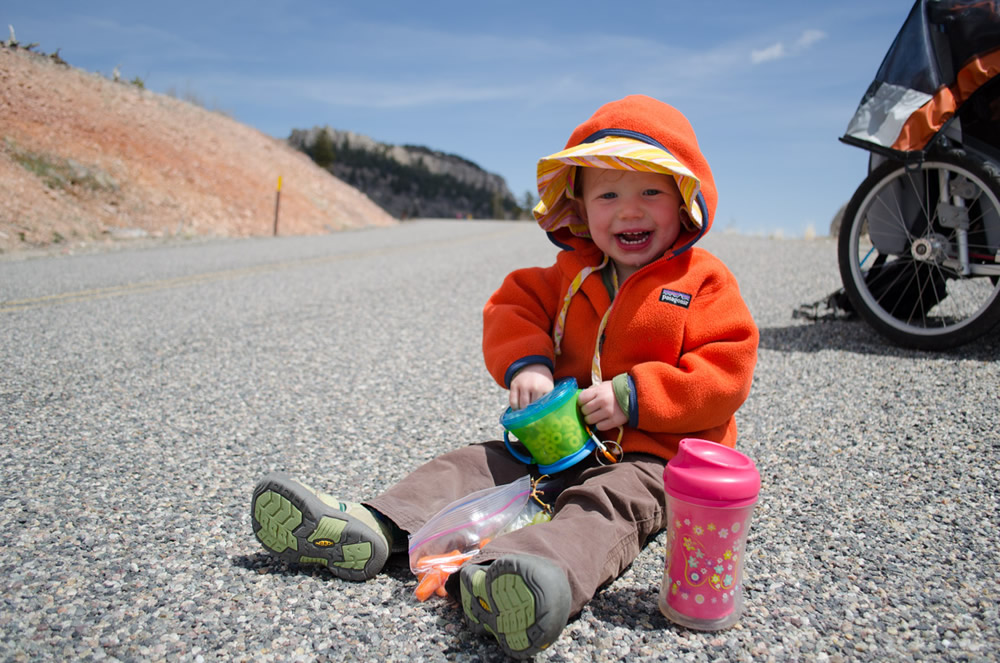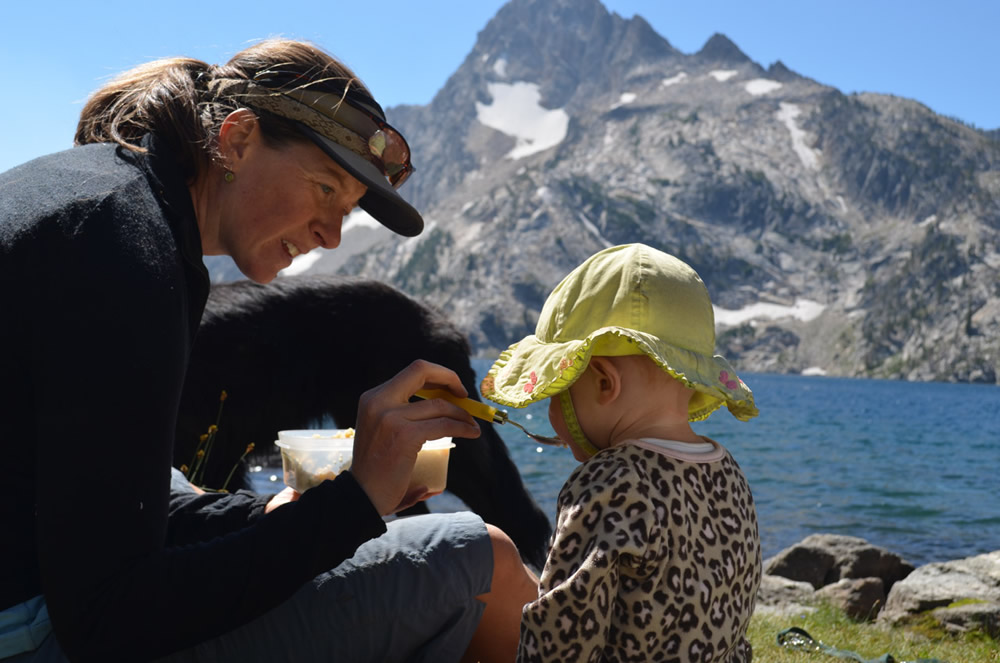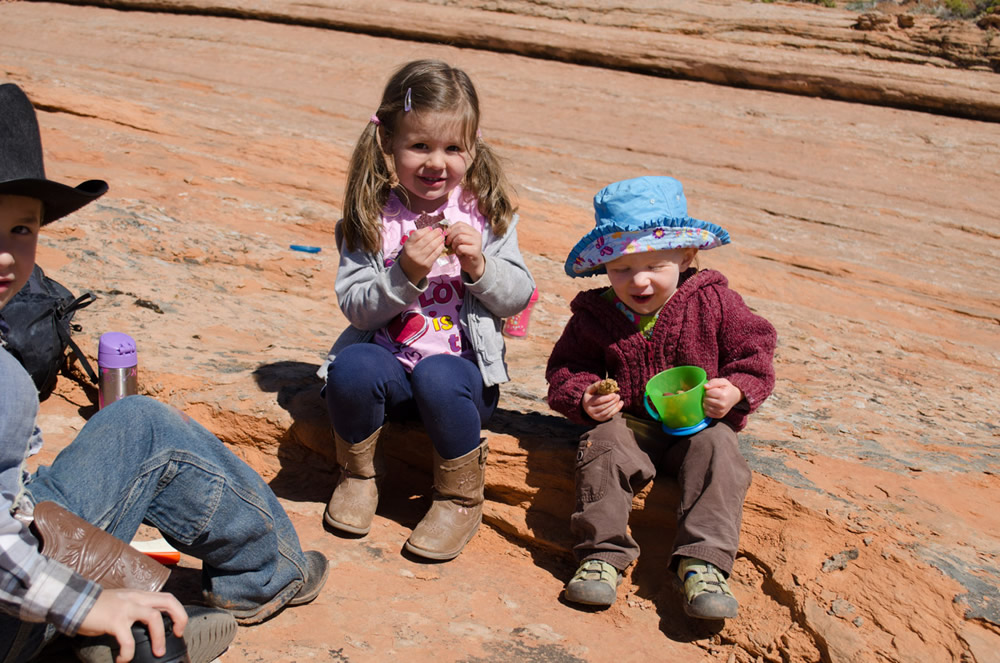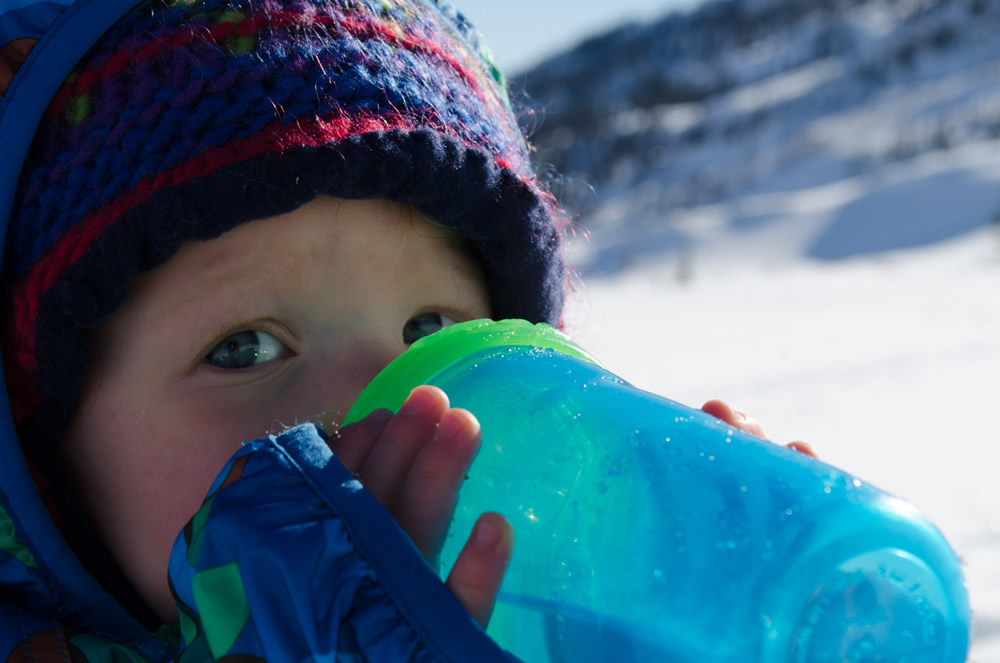On most of my previous backpacking and outdoor adventures, I like to plan and prepare gourmet meals, spend time in the backcountry kitchen, and relax and enjoy my tasty creations. Well, that changed when I had my first baby. At six weeks old, my daughter went on her first backpacking trip. As if being new parents wasn't hard enough, we took on the backpacking challenge, partly to see if we could do it and partly to help us feel like ourselves again by being out in nature, doing the things we love to do. We planned a trip that had a short hike in and base camped at the same location for two nights. We kept everything simple, including eating "just add hot water" meals. That trip had its challenges of nursing and diaper changes on the trail and by headlamp at night. We had little to no time to relax, but we did it. Since that first trip, we've backpacked many times with our kid carrier and have adapted to heavier packs, more trail stops, fewer miles, and a simpler meal plan. The challenge for this summer will be to keep our daughter well fueled and happy as she is now hiking and doing more on her own.
Food and proper fueling can make or break any adventure, for adults and kids alike. Adequate calories and fluids are essential for optimal energy, clarity in thinking, making safe and appropriate decisions, and being on your game. For kids, being well fueled keeps them happy, engaged, and energetic. It is important for each adventure to be a positive experience so they will want to do it again. If a child is hungry, thirsty, cranky, and sluggish, he may be apprehensive to try it again.

Here are a few tips and ideas to fuel your kids in the wild:
Involve your kids in the food planning and preparation. Allow them to put together their own trail mix and make their own granola bars, help you dehydrate fruit and vegetables, or plan their favorite meals. Let them carry their own backpack with water, trail snacks, and a favorite little stuffed animal.
Plan ahead. You don't want to run out of food, but you also don't want to carry pounds of excess food. Organize your food by laying it out on your kitchen table to make sure you have everything you need, (but not too much). To account for your child's increased activity level, be sure to bring more food than your child would eat in a typical day.
Keep it simple. If you just want to keep it super simple, use freeze dried meals for dinner. All you need to do at camp is boil water. You don't even need to wash dishes. Freeze dried meals are typically packed with flavor. You can get more bang for your buck by adding a quick cooking grain, like couscous or instant brown rice, and/or freeze dried vegetables to the bag along with more hot water. This will extend your meals for additional little mouths. You may want to let your kids taste test meals prior to going in the backcountry to make sure they like them. Most kids like mac and cheese, pastas, lasagnas, and granola. Pack stove-free breakfasts like energy bars, granola with dried milk, or bagels with peanut butter (in a squeeze tube) if you don't want to cook in the morning. Tuna wraps, cheese and crackers, and sandwiches make simple trail lunches.

Add variety. Offer two-three choices to kids and allow them to pick out what they want to eat. Apples, grapes, carrot sticks, dried fruit, vegetable chips, homemade fruit roll ups, trail mix, gold fish crackers, string cheese, raw, flavored or spiced nuts and seeds, fruit leathers, flavored Chex or Cheerios cereals, pretzels, animal crackers, popcorn, homemade trail cookies, or energy bars all make nutritious, easy snacks. Used sparingly, chocolate chips, M&M's, Reese's Pieces, and Skittles are sweet additives to add to trail mixes. Fruit cups and applesauce cups are heavier choices, but may be worth the extra weight. Incorporate a variety of colors in your meals from fruits and vegetables (not from too many M&Ms or Skittles, however).
Eat more healthy food. Depending on their age, gender, and activity level, kids will need at least 500-1,000 additional calories each day. Teach him or her to include a carbohydrate and protein source at each meal and snack. To help with recovery, eat a post-activity snack within 30 minutes after completing your adventure, before setting up camp or driving home.
Eat frequently.nk "all you can eat trail buffet." Most kids need to eat and drink at least every one-two hours. However, it is a good idea to eat at every stop, whether tying shoes or using the "facilities." Keep food and drinks in easy-to-get- to places, not at the bottom of your pack. Be sure to eat a hearty breakfast, one-two morning snacks, take a decent lunch break, one-two afternoon snacks, a pre-camp set up snack, dinner, and again before bed.

Drink frequently. Don't skimp on fluids. Kids will need to drink more, especially if he/she is a heavy sweater. Use a kid's hydration system with a tube that allows them to sip water very easily. Pack a bottle with a sports beverage, as it is a quick energy booster for kids and won't grow funk in a hydration system. Flavored sports drinks will also improve the taste of filtered lake water. End the day with a hot cocoa or tea. Teach kids to look for pale colored urine, and encourage them to drink more if it's not. Consider setting a watch timer every 20-30 minutes to remind everyone to take a drink.
Take "fun foods." If the majority of your child's trail diet is healthy, it's okay to take a favorite treat or dessert for them to eat in moderation. Share a candy bar, eat a couple of Oreo cookies, or bake brownies in your backcountry oven. We put M&M's on the trail for our daughter to eat to encourage her to keep eating and moving.
Be patient and flexible. Allow extra time to do just about everything: from getting dressed to cooking and eating, to playing in the stream, playing with bugs, or identifying wild flowers. Plan in extra playtime and perhaps a naptime. You'll be surprised at how that extra time is used up so quickly. If it becomes apparent that you have bitten off more than you can chew, don't be afraid to shorten your adventure or turn around early.

Make it fun. If you are car camping, let your kids help you prepare Dutch oven meals and make ice cream in an ice cream ball. Take fishing rods to catch your dinner. Let them help you filter water and set the outdoor "table." If you are a wild edibles expert, take your kids scavenging for food to add to your meals; just be sure you are confident you are not feeding them something poisonous.
Be aware. Watch for symptoms of low blood sugar, dehydration, or fatigue. Be in tune with your child's changing attitude and demeanor. Stop and do what you need to do to mitigate any symptoms immediately, i.e. sit down, eat and drink until he/she is refreshed and expressing his usual personality.
Finally, be a good role model. You are the leader and need to model healthy behaviors, including drinking and eating well, often enough so you don't crash, and become subject to low blood sugar and dehydration yourself. Take the initiative to pause for food and drink breaks before it is too late.